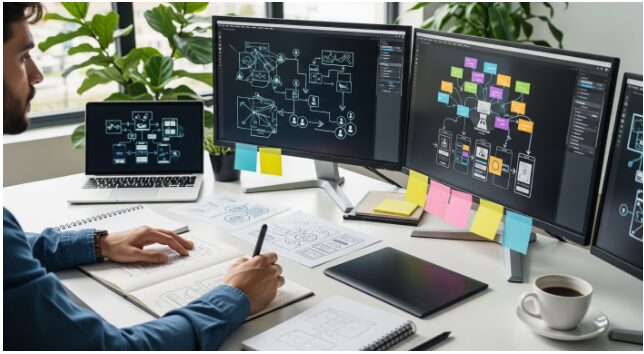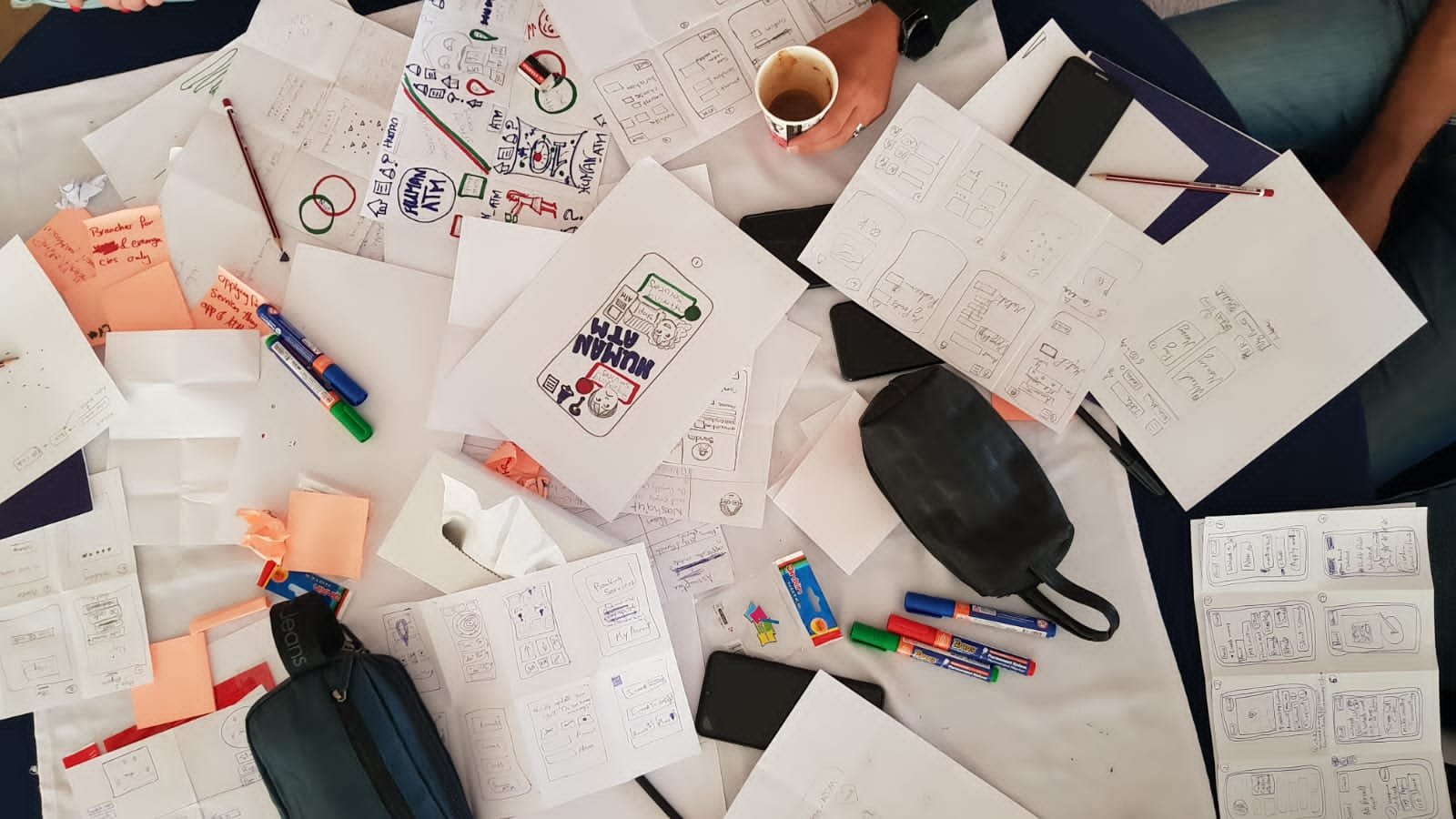Have you ever used a website or an app that just works seamlessly?
A platform where every click, swipe, or tap feels completely natural, almost as if the interface anticipates your needs before you even think of them? Where navigating through pages is so smooth and effortless that you accomplish your goals quickly—whether it’s making a purchase, finding information, or completing a task—with no frustration or confusion. This level of digital experience doesn’t happen by chance. Behind the scenes, UX designers play a pivotal role in shaping these intuitive interactions. They analyze how users think and behave, then design every element to fit those behaviors perfectly. If you’ve ever found yourself wondering, “UX designer: what do they do?” then this article is here to demystify the vital work they undertake to make digital products not just functional, but genuinely user-friendly and effective. From conducting in-depth research to prototyping and testing, UX designers ensure that every digital experience is tailored to meet human needs, blending technology with empathy and precision.
What are UX Designers?
A User Experience (UX) designer focuses on improving the usability and satisfaction a user gains from interacting with a product, such as a website, application, or software . Their primary goal is to ensure that products are user-friendly, efficient, and satisfying . This involves understanding how users think, feel, and behave when using a product and identifying areas for improvement . Essentially, a UX designer creates and optimizes the overall human experience when interacting with digital products, systems, or services . They are involved in every aspect of digital product development, including design, usability, functioning, and sometimes even branding and marketing .
Key Responsibilities of UX Designers
UX designers perform a wide range of tasks to achieve their goal of creating positive user experiences :
- Identifying User Needs and Requirements: This involves understanding what users need and want from a product . UX designers conduct interviews or other forms of inquiry to help understand user needs .
- Conducting User Research and Testing: They gather feedback from real users through various methods like interviews, surveys, and usability testing . This research helps them understand user behavior and identify potential problems .
- Designing User Interfaces (UI): While often collaborating with UI designers, UX designers are crucial in creating the visual elements users interact with, such as buttons, forms, and menus . They also design graphic user interface elements like tabs and widgets .
- Developing Interaction Models: UX designers define how users will interact with a product, considering the human-computer interaction element . They produce flow diagrams, storyboards, and site maps to illustrate design concepts .
- Creating User Flows: They map out the pathways users take to complete tasks within a product .
- Creating User Personas: These are fictional representations of target users based on research, helping designers empathize with users’ needs and behaviors.
- Prototyping and Wireframing: They create blueprints and interactive models (wireframes and prototypes) that visualize how users will navigate and interact with a product before it’s fully developed . This allows for testing and validation of ideas .
- Usability Testing and Analysis: UX designers perform tests on various user interface elements and gather feedback to identify and resolve usability issues . They then make layout changes based on this feedback .
- Collaborating with Teams: They work closely with other IT professionals, product managers, developers, and stakeholders to refine user experience, ensure functionality, and align design with business objectives .
- Maintaining a Competitive Edge: This involves researching competitor products and industry trends to ensure the product remains relevant and appealing
The UX Design Process: Step-by-Step
The work of a UX designer typically follows a structured process to ensure a user-centered approach:
- Understand the User and the Brand:
The UX design journey begins with a deep dive into who the users are and what the brand represents. This foundational phase involves gathering insights about target audiences and clearly defining the business objectives behind the product. Designers often engage with stakeholders through workshops and meetings to clarify the project’s scope, primary goals, and constraints. Key questions addressed at this point include:
- Who will be using the product?
- What are their motivations, needs, and pain points?
- What problems is the product intended to solve?
- How does the product fit into the brand’s overall strategy?
By building empathy and understanding both users and brand priorities, designers set the stage for effective, relevant solutions.
- Conduct User Research:
In this crucial phase, UX designers collect qualitative and quantitative data on real users. This can involve:
- Interviews to capture user thoughts and emotions
- Surveys to gather broader user feedback
- Usability testing on existing products to observe behaviors
- Ethnographic studies to understand users in their natural environment
- Competitive analysis to examine industry trends and benchmark features
The aim is to build rich, evidence-based user personas, journey maps, and other artifacts that accurately capture user expectations and frustrations, ensuring design decisions are grounded in actual user needs.
- Analyze What’s Learned:
Once research is collected, UX designers systematically analyze the data to extract actionable insights. This involves:
- Identifying common user pain points and challenges
- Mapping user flows to understand how users currently navigate systems
- Highlighting opportunities for improvement and innovation
- Aligning findings with business objectives to prioritize features
This analysis ensures the team focuses on high-impact areas that will enhance usability and user satisfaction.
- Design:
Armed with research insights, designers begin crafting the structure and look of the product. This stage includes:
- Developing information architecture such as site maps or navigation structures to organize content logically
- Producing wireframes — simplified, low-fidelity layouts that show content placement and functionality without distractions of visual design
- Creating interactive prototypes that simulate user interactions and workflows, allowing stakeholders to visualize the design direction early on
Design focuses on usability, consistency, accessibility, and aesthetic appeal, setting a clear blueprint for development.
- Conduct User Testing:
Designs are then validated through rigorous user testing, where real users interact with prototypes or early versions of the product. This phase is critical for:
- Observing real user behavior to identify usability hurdles or confusing elements
- Gathering direct feedback on what works and what does not
- Validating assumptions made during design
- Prioritizing necessary design changes before development begins
Testing is often iterative—multiple rounds help refine the product progressively.
- Present Work:
Finally, designers present their solutions to stakeholders, clients, or internal teams. This phase involves clearly communicating:
- How the design meets user needs and business goals
- The rationale behind key design choices supported by research data
- Next steps, including implementation plans and further iterations
Effective presentation ensures alignment among all decision-makers and secures buy-in for moving forward.
This structured UX design process is inherently iterative—designers continuously revisit earlier steps as new insights emerge. This approach maximizes the chance of delivering a product that users find intuitive, valuable, and enjoyable to use.
By following these phases systematically, UX designers craft digital experiences that not only solve problems but delight users at every interaction.
Essential Skills & Tools for UX Designers
To succeed in this role, UX designers need a combination of soft and technical skills:
- Empathy: The ability to understand problems and solutions from the user’s point of view is fundamental .
- Analytical Thinking: They must be able to interpret data from research and testing to make informed design decisions .
- Communication and Collaboration: Effective communication is crucial for interviewing users, presenting solutions to stakeholders, and working harmoniously with diverse teams .
- Problem-Solving Skills: UX designers identify and analyze problems, then develop creative and novel solutions .
- Technical Skills: Proficiency in tools for creating prototypes, wireframes, mockups, and user flows is essential . This often includes design software like Figma, Sketch, or Adobe XD.
- Knowledge of User Psychology: Understanding how users think and what motivates them is key to predicting what will work for both the user and the product .
How to Choose the Right UX Partner for Your Business
Selecting a UX design partner is a strategic decision that can significantly impact your product’s success. Look for a partner who:
- Has a proven track record of delivering successful projects.
- Employs a research-driven approach, basing design decisions on user insights rather than assumptions.
- Offers comprehensive services, from initial user research to post-launch iteration.
- Demonstrates a cultural and business fit with your organization.
webkeyz: Empowering Exceptional Digital Experiences
webkeyz stands out as a leading UX Design and Innovation Agency. With a focus on creating human-centered and research-driven designs, webkeyz transforms products and businesses by delivering measurable results. They offer a comprehensive suite of services including UX/UI design, app development, and innovation workshops. webkeyz’s commitment to understanding user needs ensures that their solutions lead to exceptional digital experiences.
Thinking of enhancing your digital experience?
Contact webkeyz today to unlock the benefits of world-class UX design and business innovation!
Ready to elevate your digital product with an outstanding user experience?
Connect with webkeyz and discover how innovative UX design can deliver lasting value to your users and your bottom line.
Until next time explore webkeyz’s case studies
and Keep Thinking!








